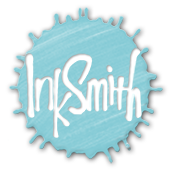This week, Inksmith received our team URL: http://www.etc.cmu.edu/projects/inksmith/
Our future weekly updates will be continued on our website, though we will email out a link to the posts to our advisers and client every week.
Inksmith spent the week beginning to plan out interactions for our first prototype. Our artists have begun to model, rig, and animate the main character of the app, then put together scenes in Unity. Thomas, our main programmer, has started coding in Unity to recognize various gestures on an iPad, such as tapping, pinching, and swiping. We received our Unity Asset Server on Friday, allowing the team to work together and contribute on the same Unity project, which should help facilitate our ability to work together efficiently.
We received a lot of children’s books from both one of our faculty advisers, Mike Christel, and our client, Josie. There are now around 20 or so children’s books of various styles and stories, with different colors and shapes and told different ways. We read through all of them between the team members and discussed various aspects that we liked about their storytelling methods. Josie also sent us a few mobile apps, which we also looked up and studied the kinds of interactions they used.
When Josie came to see us during our weekly client meeting, we shared with her some of our planned interactions, as well as our models and current build. We had hit a snag in our pipeline, though, so we were unable to get everything we had on in Unity on our device. We also touched on the style of art and framing of the interactions as a whole. Josie gave us feedback about what she felt worked well in our interactions, and stressed again the importance of making sure our interactions were additive to the experience, and not a distracting activity that took away engagement from the central story. She also encouraged us to make storyboards of the experience, and told us about a conference known as “Dust or Magic” in November, which specializes in new and innovative media geared towards children. The conference would likely be an excellent opportunity to display one of our story prototypes.
After the previous week, we came together and agreed that core hours of the previous week did not lend themselves well to coming together and doing an acceptable amount of work. Now that the semester has settled and the team members have dropped a number of previous electives, we were able to readjust our schedules to make some new core hours, as follows:
- Mon: 11 AM – 1 PM, 5 PM – 8 PM (5 hrs)
- Tues: 5:30 PM – 9 PM (3.5 hrs)
- Wed: 4 PM – 9 PM (5 hrs)
- Thurs: 5:30 PM – 9 PM (3.5 hrs)
- Fri: 10 AM – 6 PM (8 hrs)
The total once again comes out to 25 hours during the week, and hopefully the new schedule will lend itself better for us to work together better and more efficiently.
Josie left us with a more explicit statement of the goal for the semester that we will focus our work through from here on out. Our goal should be to focus on what aspects of our story prototypes can be considered “universal” to translating paper storybooks into interactive applications. What interactions are especially appealing to children, and can be applied to a variety of story situations? What kinds of principles are good to keep in mind when approaching a new story, and to what extent do we need to customize each story we adapt? In this vein, we will keep in mind all of the stories Josie generously provided us with, and when we design new interactions, try to think of ways we could apply that interaction in one of our paper storybooks.
Next week:
Inksmith will begin working using our new core hours, and will start putting together the text appearing function with some scratch track narration audio. We will begin storyboarding the experience and interactions in a much more in depth manner, and integrate the new scenes and models into a mobile prototype that we can physically show and hopefully playtest as soon as possible. We will also begin communication to facilitate playtesting with young children.
We will also begin planning and discussion of our team branding, beginning the process of creating a team poster, logo, and half sheet.
